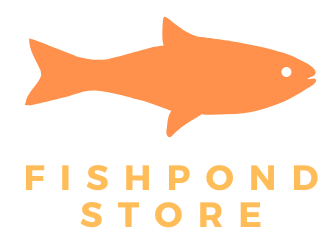Wondering what chemicals are safe to use in ponds? As a pond enthusiast, I understand the importance of maintaining water quality while keeping aquatic life safe. From beneficial bacteria to algae control products, choosing the right chemicals can make all the difference in the health and beauty of your pond ecosystem. Let me guide you through what chemicals are safe to use in ponds, including some safe and effective options for maintaining your pond.
What Chemicals Are Safe To Use In Ponds?
Have you ever wondered what chemicals are safe to use in your pond to maintain its health and clarity? As a pond owner myself, I have done extensive research to ensure that I am using only safe and effective chemicals in my pond. In this article, I will share with you some of the best chemicals that you can use in your pond without harming the ecosystem.
Understanding Pond Chemicals
Before we dive into the specific chemicals that are safe to use in ponds, it’s important to understand the different types of pond chemicals available in the market. There are three main categories of pond chemicals:
- Water Clarifiers: These chemicals help to clear up cloudy water and eliminate suspended particles that make your pond look murky.
- Algaecides: Algaecides are used to control algae growth in ponds, which can quickly become a nuisance and disrupt the balance of the ecosystem.
- Stabilizers: These chemicals help to stabilize and maintain the pH levels in your pond, creating a suitable environment for fish and plants to thrive.
By understanding the purpose of each type of pond chemical, you can make informed decisions about which ones are best suited for your pond.

Safe Pond Chemicals For Water Clarification
One of the most common issues that pond owners face is cloudy water, which can be caused by debris, algae, or other factors. Here are some safe and effective water clarifiers that you can use in your pond:
| Chemical Name | Purpose | Safe for Fish | Safe for Plants |
|---|---|---|---|
| Poly/acrylamide | Clumps particles | Yes | Yes |
| Chitosan | Binds particles | Yes | Yes |
| Aluminum Sulfate | Clears cloudy water | No | No |
Poly/acrylamide and chitosan are safe for fish and plants while effectively clumping and binding particles together. However, aluminum sulfate should be used with caution, as it may harm fish and plants in the pond.
Friendly Tip:
When using water clarifiers in your pond, always follow the manufacturer’s instructions carefully to avoid over-treating the water.
Recommended Algaecides for Controlling Algae Growth
Algae growth can quickly take over a pond if left unchecked, leading to water quality issues and potentially harming fish and plant life. Here are some safe algaecides that you can use to control algae growth in your pond:
| Chemical Name | Purpose | Safe for Fish | Safe for Plants |
|---|---|---|---|
| Copper Sulfate | Kills algae | No | No |
| Algaecide 50 | Controls algae growth | Yes | Yes |
| Barley Straw | Prevents algae growth | Yes | Yes |
Copper sulfate is effective at killing algae but can be harmful to fish and plants, making it a less desirable option for pond owners. Algaecide 50 and barley straw are safer alternatives that can control algae growth without harming the ecosystem.
Friendly Tip:
To prevent algae from blooming in your pond, consider incorporating plants that provide shade and compete with algae for nutrients.

Stabilizers for Maintaining pH Levels in Your Pond
Maintaining the proper pH levels in your pond is crucial for the health of fish and plants. Stabilizers can help to regulate pH levels and create a stable environment for aquatic life to thrive. Here are some safe stabilizers that you can use in your pond:
| Chemical Name | Purpose | Safe for Fish | Safe for Plants |
|---|---|---|---|
| Sodium Bicarbonate | Raises pH levels | Yes | Yes |
| Calcium Carbonate | Raises alkalinity | Yes | Yes |
| Potassium Permanganate | Treats parasites | No | No |
Sodium bicarbonate and calcium carbonate are safe options for raising pH levels and alkalinity in your pond without posing a risk to fish and plants. However, potassium permanganate should only be used as a last resort for treating parasites in the pond.
Friendly Tip:
Regularly test the pH levels in your pond and adjust them as needed to ensure a healthy environment for fish and plants.
What Chemicals Are Safe To Use In Ponds
In conclusion, choosing the right chemicals for your pond is essential for maintaining its health and clarity while keeping fish and plants safe. By understanding the purpose of each type of pond chemical and selecting safe options, you can ensure that your pond remains a thriving ecosystem for years to come.
Remember to always read and follow the manufacturer’s instructions when using pond chemicals and consult with a professional if you have any concerns about the safety of a particular chemical.
I hope this article has been helpful in guiding you towards making informed decisions about the chemicals you use in your pond. Remember, a well-maintained pond is not only a beautiful addition to your landscape but also a healthy habitat for aquatic life. Happy pond-keeping!
